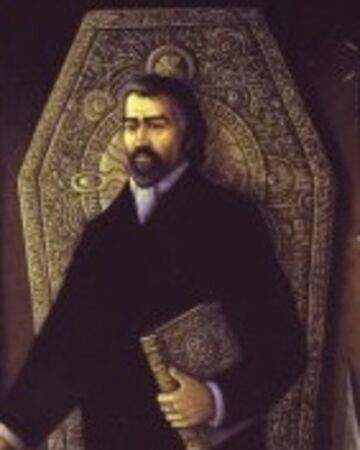Master By Name, Master By Number

“Titus Crow?” said Arnold. “Yes, well, we’ve all had reason to fear him in our time…”
– Geoffrey Arnold (The Black Recalled, 1983)
‘He was impossible to miss. Tall in his dark suit, with his leonine head and imposing looks, he would have seemed prominent in any crowd…’ Such is the description of Titus Crow, delivered by his amanuensis and friend, Henri-Laurent De Marigny in the opening pages of the 1977 story, “The Viking’s Stone”.
Created in 1971 by author Brian Lumley, the character was crafted in the tradition of other occult investigators, such as John Silence or Carnacki; Crow was an avowed agent of good, his struggles all the more impressive for occurring as they did in the harsh, nihilistic universe created by HP Lovecraft.
Titus Crow first appeared in Lumley’s 1971 story, “The Caller of the Black”. Crow’s credentials as a psychic sleuth and occult investigator are impressively vetted in the story, as he defeats both mortal and immortal enemies through the cunning application of the standard Lovecraftian eldritch lore, a shower faucet and a window pole. From the outset, it is clear that Crow inhabits the same deadly universe as Inspector Legrasse or John Kirowan, where elder entities prey on an mostly unaware human population; but unlike the former, Crow is well-armed against such entities and, unlike the latter, he’s quite happy to test himself against their machinations out of simple heroism.
Schooled in a wealth of occult lore and possessed of an innate desire to confront evil, Crow is seemingly destined from birth to pit himself against the abominable. Indeed the 1987 story, “Inception” concerns the weird circumstances of Crows’s birth and baptism and the battle between Good and Evil which revolves around the latter. Too, the occult numerology behind the date and hour of that special birth comes into play more than once, as those numbers show Crow to be a Master Magus, a fact which puts a spanner into more than opponent’s scheme.
In “The Lord of the Worms” (1983), Crow’s early career working for the British War Department in World War Two is mentioned, during which he worked to foil Hitler’s occult machinations and his destruction of the eponymous entity is his first step on the road which leads to his first ‘official’ case as an occult investigator in “The Caller of the Black”, wherein he confronts the villainous sorcerer Gedney and the nightmarish entity known only as ‘The Black’.
Spurred on by his confrontation with the monstrous in these early adventures, Crow subsequently faces off against deadly ghosts, malevolent remnants and dark magics with a ruthless idealism. It is this idealism that nearly costs Crow his life in a number of stories, including the aforementioned “The Viking’s Stone” (1977) as well as the later tale, “Name and Number” (1982), and in the 1974 novel, The Burrowers Beneath, Crow suffers the ultimate fate of all those who seek to tilt at Lovecraft’s ancient and unknowable windmills. Luckily, he got better by 1975’s The Transition of Titus Crow and was back to face off with the heavy hitters of the Cthulhu Mythos by 1989’s Elysia.
Besides the standard card catalogue of occult reference material, with the old Lovecraft circle standbys augmented by Lumley’s own additions, such as the ‘G’harne Fragments’ (which play an important part in The Burrowers Beneath) and the ‘abhorrent Cthaat Aquadingen’, Crow employs a variety of mystical tools in his battle against evil, including the Mnar Star Stones, a professional grasp of numerology and a magical grandfather clock with an atonal rhythm and a built-in laser cannon.
Too, Crow is aided in his fight against evil by his sometime assistant/apprentice Henri-Laurent De Marigny, son of Etienne-Laurent De Marigny, a minor character from HP Lovecraft and E. Hoffman Price’s collaboration, “Through the Gates of the Silver Key”. While functioning at times as a bumbling Nigel Bruce style assistant, De Marigny proves that he is a hero in his own right in the story “The Mirror of Nitocris” (1971), and then later in the 1978 novel, The Clock of Dreams.
Together, the two men take the fight to the so-called Cthulhu Cycle Deities (or ‘CCD’) in a campaign that extends for six books, and is waged across continents, planets, galaxies, realities and finally time itself before reaching a successful (albeit controversial) conclusion in Elysia.
In that respect above all others, Crow is quite different from peers like Anton Zarnak. Unlike many occult detectives, Crow has seemingly achieved a final, lasting victory (however pyrrhic) and his work is, at least for the moment, finished.
Then, can such a battle ever be said to be truly over? Only time will tell.
The Compleat Crow, containing all of the Crow short stories, is available in an inexpensive Kindle format for those interested, as are the novels. There are some nice physical editions floating around, if you can find them, but it might take some digging. While the Crow stories are both of their time and wildly over the top, they’re a lot of fun if you’re willing to roll with them.
*Author’s Note: This essay originally appeared in 2012, at Black Gate Magazine.*



